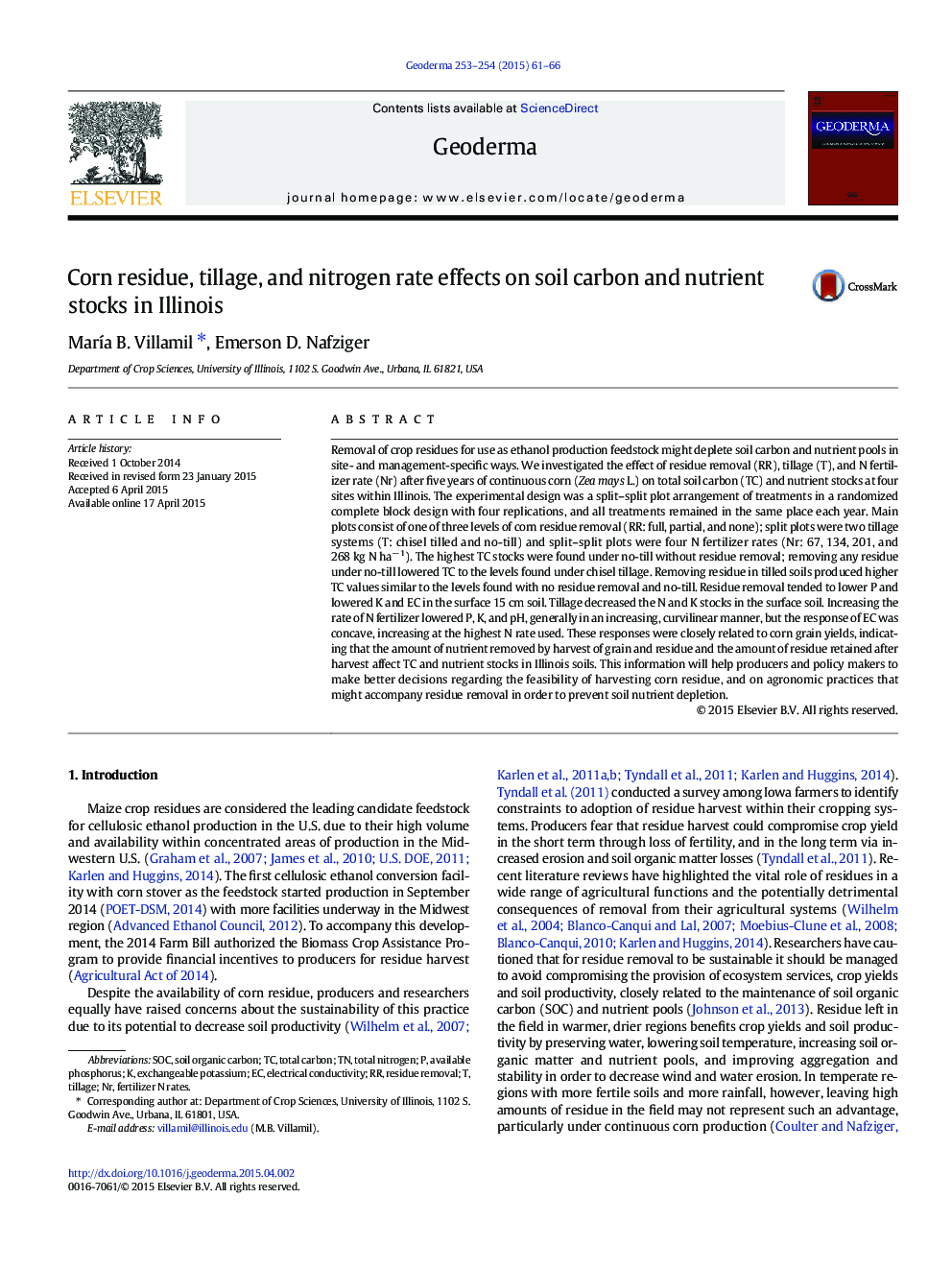| کد مقاله | کد نشریه | سال انتشار | مقاله انگلیسی | نسخه تمام متن |
|---|---|---|---|---|
| 4573173 | 1629459 | 2015 | 6 صفحه PDF | دانلود رایگان |
• The effect of residue removal on soil carbon stocks depends on tillage.
• The stock of exchangeable K was the most affected by residue removal.
• Tillage reduced stocks of carbon, N, P and K on the surface soil.
• Carbon and nutrient stock responses were closely related to corn grain yields.
Removal of crop residues for use as ethanol production feedstock might deplete soil carbon and nutrient pools in site- and management-specific ways. We investigated the effect of residue removal (RR), tillage (T), and N fertilizer rate (Nr) after five years of continuous corn (Zea mays L.) on total soil carbon (TC) and nutrient stocks at four sites within Illinois. The experimental design was a split–split plot arrangement of treatments in a randomized complete block design with four replications, and all treatments remained in the same place each year. Main plots consist of one of three levels of corn residue removal (RR: full, partial, and none); split plots were two tillage systems (T: chisel tilled and no-till) and split–split plots were four N fertilizer rates (Nr: 67, 134, 201, and 268 kg N ha− 1). The highest TC stocks were found under no-till without residue removal; removing any residue under no-till lowered TC to the levels found under chisel tillage. Removing residue in tilled soils produced higher TC values similar to the levels found with no residue removal and no-till. Residue removal tended to lower P and lowered K and EC in the surface 15 cm soil. Tillage decreased the N and K stocks in the surface soil. Increasing the rate of N fertilizer lowered P, K, and pH, generally in an increasing, curvilinear manner, but the response of EC was concave, increasing at the highest N rate used. These responses were closely related to corn grain yields, indicating that the amount of nutrient removed by harvest of grain and residue and the amount of residue retained after harvest affect TC and nutrient stocks in Illinois soils. This information will help producers and policy makers to make better decisions regarding the feasibility of harvesting corn residue, and on agronomic practices that might accompany residue removal in order to prevent soil nutrient depletion.
Journal: Geoderma - Volumes 253–254, September 2015, Pages 61–66
